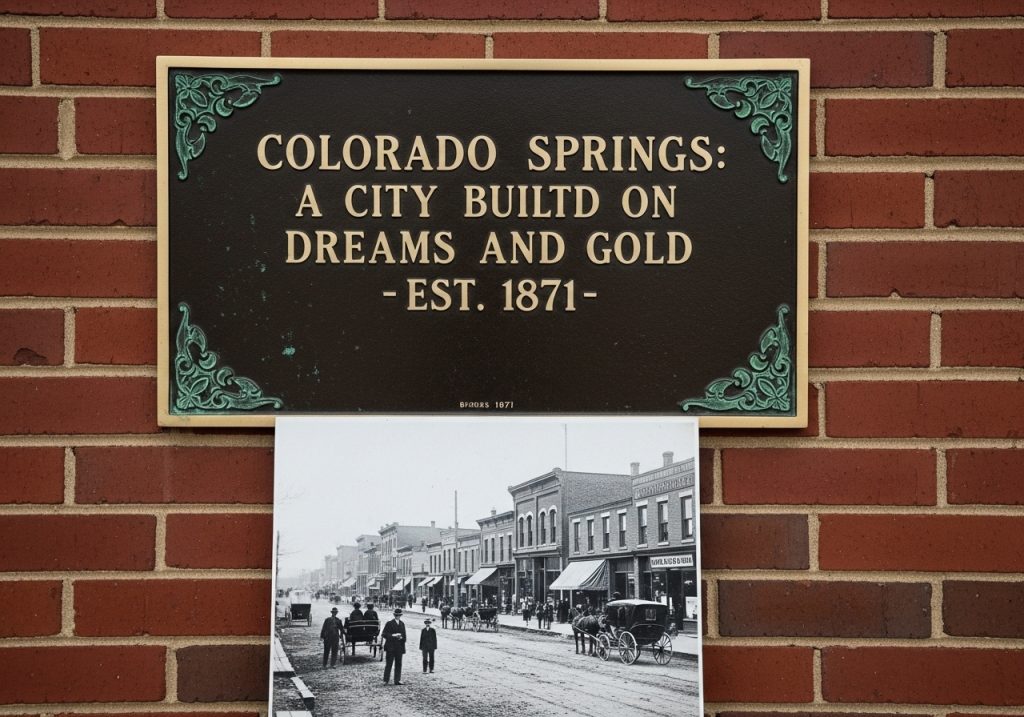
By the late 19th century, Colorado Springs became a haven for tuberculosis patients. The clean air, sunny weather, and high altitude were thought to aid recovery, leading to an influx of “lungers” seeking a cure. Sanatoriums and boarding houses sprang up to accommodate the growing population. This era brought economic growth and also shaped much of the city’s architectural and social character.
In the early 20th century, mining and industry became significant economic drivers. The nearby town of Cripple Creek, with its booming gold mines, contributed to regional prosperity. However, it was the arrival of the military that truly transformed Colorado Springs. In 1942, Camp Carson (now Fort Carson) was established, followed by Peterson Air Force Base, Schriever Space Force Base, and the United States Air Force Academy in the 1950s. These installations brought jobs, infrastructure, and a growing population.
Colorado Springs continued to grow through the late 20th and early 21st centuries, evolving into a hub for defense, technology, and tourism. Its stunning natural surroundings—highlighted by Garden of the Gods, Cheyenne Mountain, and the ever-prominent Pikes Peak—continue to draw visitors from around the world. The city blends a rich pioneer legacy with a forward-looking spirit, embodying the best of Colorado’s rugged beauty and vibrant culture.
Long before Colorado Springs became a destination for settlers, the area was home to various Native American tribes, most notably the Ute, Cheyenne, and Arapaho peoples. These indigenous groups utilized the rich natural resources of the Pikes Peak region for sustenance, spiritual practices, and as a central point in their seasonal migrations. Pikes Peak itself held sacred significance, often seen as a gateway between the earthly and the spiritual realms.
European exploration began in the 1700s when Spanish explorers ventured into the area, followed by trappers and traders in the early 1800s. However, it wasn’t until 1806 that Zebulon Pike led an expedition into the area, recording detailed observations of the massive peak that would later bear his name. Pike’s writings sparked broader interest in the region, setting the stage for future settlement and development.
Colorado Springs was officially founded in 1871 by General William Jackson Palmer, a Civil War hero and railroad magnate. Palmer envisioned a refined resort community that would attract wealthy tourists and health seekers. His vision came to life when he extended the Denver and Rio Grande Railroad into the region, making the area accessible and promoting it as a healthful retreat thanks to its dry climate and scenic beauty.
Palmer’s ideals helped shape the city’s early identity. He established institutions such as Colorado College in 1874 and invested in parks, tree-lined boulevards, and cultural landmarks. His philanthropic efforts laid the groundwork for a city that quickly grew in sophistication and prosperity.
HERE Colorado Springs strives to provide the finest deals, products, and experiences in your local community. It’s all RIGHT HERE, and it’s all LOCAL.
If you notice something that you believe should be here, please let us know. And you’ll notice it soon HERE!
© Copyright 2025, HERECity.com